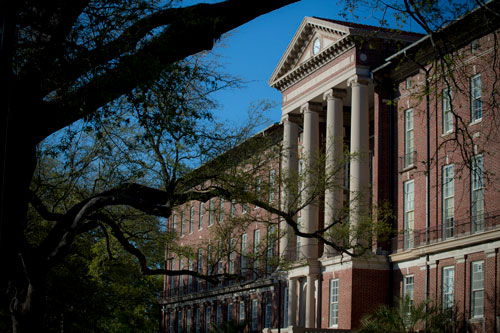
When we established the School of Liberal Arts Magazine one year ago, we decided that each issue would be organized around a theme. Topics would be bold, taking up subjects that matter. They would have resonance across multiple disciplines and allow us to showcase the frequently unex- pected ways in which our faculty and students were thinking about big questions.
The theme of this issue—an in-depth look at New Orleans—was planned months before the COVID-19 pandemic disrupted the 2019-20 academic year. What was orig- inally conceived of as new directions in understanding the supposedly familiar city, now has additional layers of resonance.
When Tulane’s leadership determined to end in-person classes in March, most students were forced to return home, putting them at a great distance from New Orleans. Since Tulane’s undergraduates travel an average of nearly 1,000 miles to get to school, many in our community are far removed from the city—and missing it all the more profoundly as it confronts a new set of challenges.
I am frequently asked what it is that makes Tulane such a remarkable place to study, to do research, and to live. Clearly New Orleans is a key part of the answer. I have been searching for a vocabulary to describe that peculiar alchemy between Tulane and New Orleans. This city is far more than simply our hometown, or our host (the way other major universities sometimes sit at the periphery of their cities). No, New Orleans is not incidental to Tulane, but rather it is a strand in the university’s DNA.
That essential relationship goes back to our founding in 1834 as the Medical College of Louisiana, created to train doctors in outbreaks of yellow fever and cholera, which put a commitment to public service and the interplay of research, teaching, and geography at our foundation. It incorporates the inspiring ways in which the univer- sity and city struggled together to recover from the devastation of Hurricane Katrina. Words like resilience, commitment, and community are used frequently to describe this relationship. And as we look forward to the next set of challenges and opportu- nities, phrases such as global port, creative city, and coastal urbanism continue to arise in conversations about the city’s past, present, and future.
As anyone who has lived in this complex, passionate, and precarious city knows, New Orleans is a city that thrives on social connections. So the stay-at-home orders that stretched for three months between March and June hit its people hard. And yet New Orleanians also know hardship, whether the memory of the long recovery from environ- mental devastation, or the many times in the past that public health crises have sent them or their forebears into containment.
What emerges here is a complex, global port city with profound challenges, little recognized populations, effaced historical episodes, and lessons for the world. Our writers are scholars, teachers, students, artists, and activists. And our hope is that even the most dedicated New Orleanians will find many moments of surprise.
No single word or phrase can isolate the chemistry between Tulane and New Orleans. Let us recognize that the creative collision between them is essential, indeed existential, and build on that for the future of both.

Brian Edwards
Dean & Professor of English
School of Liberal Arts

